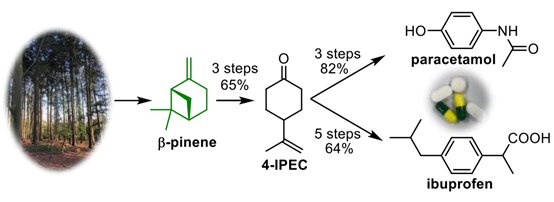This is super cool! And they were able to make another major chemical precursor too. I see the yield for ibuprofen is only 64% but I have to assume that’s there room to optimize that reaction scheme to generate higher yields!
I would love to see the full synthesis process as well as reaction conditions, but like everyone else who leaves academia I lost access to journals after finishing my grad program.
Thank you!!
Very interesting articles - both the phys.org one and journal submission it describes. I appreciate the research group’s use of solvent-free and one-pot reactions wherever possible, it really shows their commitment to finding the most sustainable overall process.
The aromatization steps using palladium (0) are of course standard processes used by the oil refining industry, but I wonder if there are other methods (maybe using sulfur?) that don’t involve the use of rare metals…probably wouldn’t have the same atom economy as using catalytic Pd though, I am just curious rather than criticizing their choice.
Palladium is just incredibly efficient despite its cost. At this point, just making products from biological feedstocks is a step forward. It will take a lot more work to reduce reliance on precious metals. I would bet more on catalysts based on metals like Nickel, Iron, Cobalt or Copper to do a lot of the heavy lifting down the line.
Nickel or iron would be a lot cheaper and could get the job done with some tweaking, good suggestion. I’ve done aromatizations of cyclohexene derivatives with sulfur in the past that have been pretty high yielding too (which is why I mentioned it), and bubbled the hydrogen sulfide gas through bleach and other aqueous oxidants to prevent stench. Sulfur is dirt cheap, but it was used stoichiometrically.
As you say though, the biggest step forward was already done by this group - switching feedstock to biomass. I hope to see more and more of this type of research to deliver on the promise of ‘green chemistry’, which in my past experience has been used as a label somewhat dubiously just to make a journal submission stand out.
This feels like college organic chemistry all over again.



